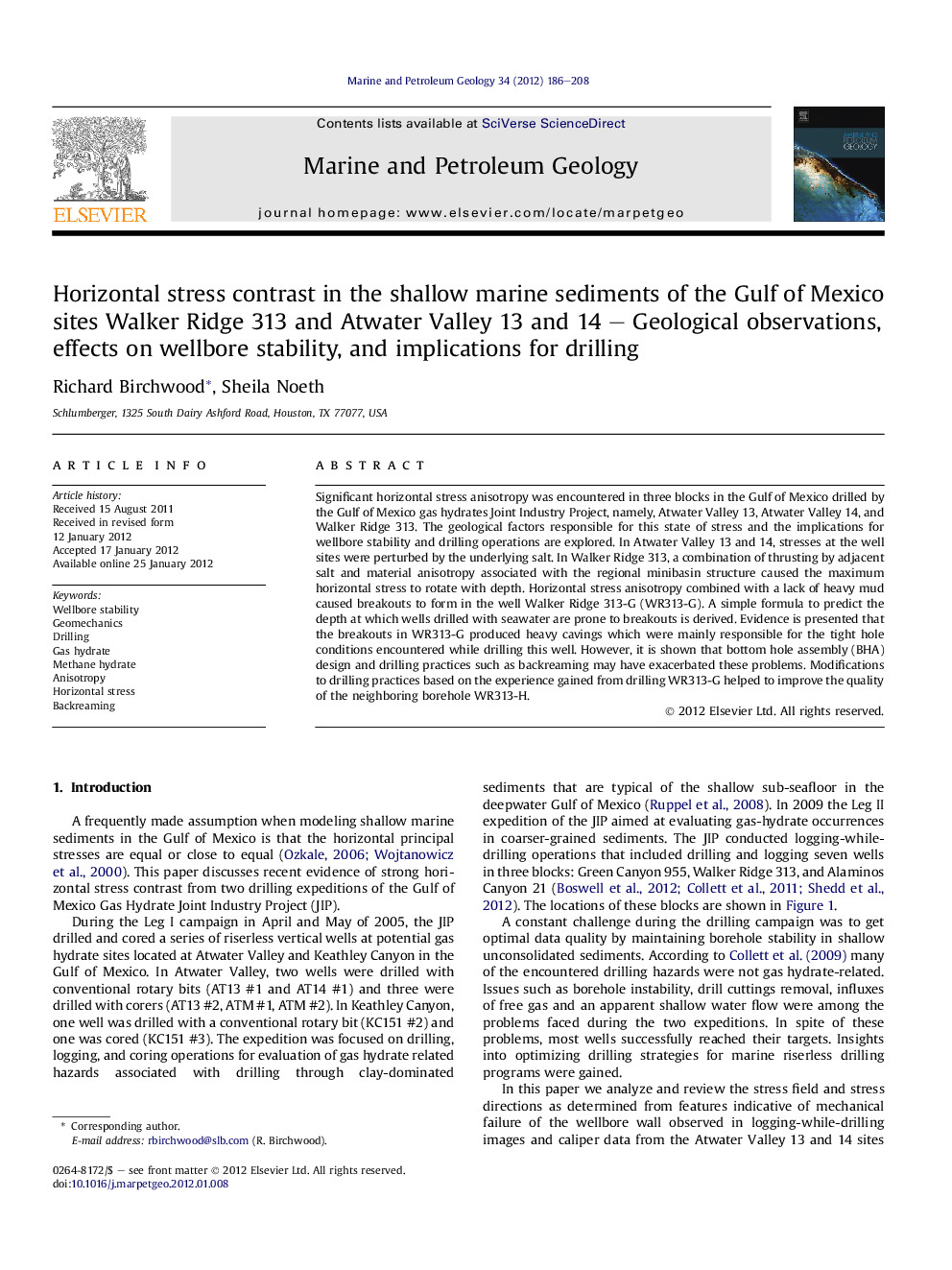| Article ID | Journal | Published Year | Pages | File Type |
|---|---|---|---|---|
| 4695974 | Marine and Petroleum Geology | 2012 | 23 Pages |
Significant horizontal stress anisotropy was encountered in three blocks in the Gulf of Mexico drilled by the Gulf of Mexico gas hydrates Joint Industry Project, namely, Atwater Valley 13, Atwater Valley 14, and Walker Ridge 313. The geological factors responsible for this state of stress and the implications for wellbore stability and drilling operations are explored. In Atwater Valley 13 and 14, stresses at the well sites were perturbed by the underlying salt. In Walker Ridge 313, a combination of thrusting by adjacent salt and material anisotropy associated with the regional minibasin structure caused the maximum horizontal stress to rotate with depth. Horizontal stress anisotropy combined with a lack of heavy mud caused breakouts to form in the well Walker Ridge 313-G (WR313-G). A simple formula to predict the depth at which wells drilled with seawater are prone to breakouts is derived. Evidence is presented that the breakouts in WR313-G produced heavy cavings which were mainly responsible for the tight hole conditions encountered while drilling this well. However, it is shown that bottom hole assembly (BHA) design and drilling practices such as backreaming may have exacerbated these problems. Modifications to drilling practices based on the experience gained from drilling WR313-G helped to improve the quality of the neighboring borehole WR313-H.
► Origins and implications of significant horizontal stress anisotropy in two deepwater gas hydrate provinces are explored. ► Salt tectonics appear to be primary cause of horizontal stress contrast. ► Drilling performance was adversely affected by borehole breakouts. ► Improvements to BHA design and drilling practices are recommended. ► Mechanical stability of boreholes drilled with seawater are evaluated.
